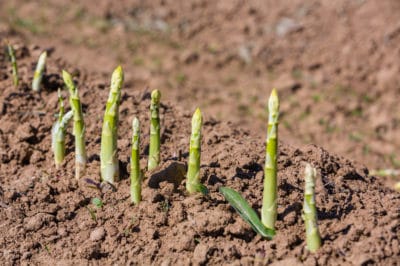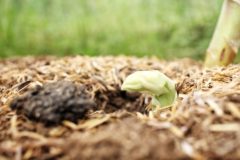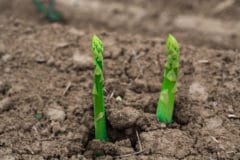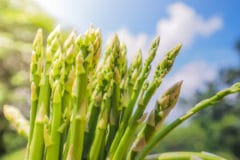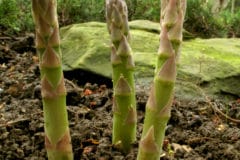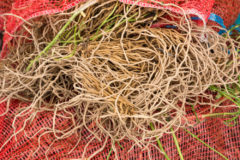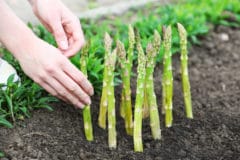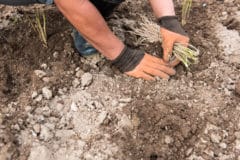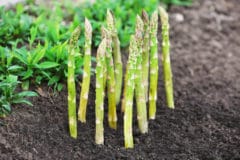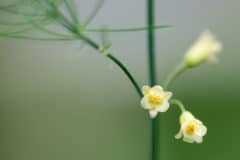Finding the Perfect Spot for an Asparagus Bed
Asparagus plants do best when they have a dormant period during the winter, and plants grown without this dormancy produce fewer shoots for a shorter lifespan. Dormancy is triggered by low temperatures and reduced water, making asparagus most successful in regions with cold winters.
Asparagus is unusual among garden vegetables because it is perennial, growing for multiple years in the same location. The large, tuberous roots which develop over several years then nourish and support the crops of edible shoots appearing each spring, so choose a spot where the plants can stay permanently.
Situate your asparagus bed near a source of water, and keep it away from planting areas where the mature plants will cast shade on other sun-loving plants. Mature asparagus plants can reach 6 feet (1.8 meters) tall and will shade out a large block of garden space on one side of the bed in summer.
Pick a site in full sun, although plants will produce with some shade. Carefully choosing the location for a new asparagus bed and preparing it thoroughly before planting maximizes your chances of reaping a bountiful harvest for many years.
Best Soil for Asparagus
Asparagus plants need well-drained soil. A way of measuring soil drainage is by digging a hole approximately 1 foot (30cm) deep and wide and filling it with water. After the water drains, fill the hole again, then measure how fast water drains out the second time. If water drains at a rate of 1 to 4 inches (2.5 to 10.1cm) per hour, consider your soil well-drained.
If drainage is outside of this range, consider building a raised bed by constructing a wooden or brick border around the planting area approximately 12 to 16 inches (30 to 40cm) high and filling it with a of mixture materials such as:
- Compost
- Leaf mold
- Sand
- Imported loam or sandy loam soil
Alternately, you can dig out an area in the ground to a depth of 1 foot (30cm) and fill it with a mixture of these materials. Adjust soil to a pH of 6 to 6.5.
How to Plant Asparagus into a New Bed
Plant crowns in fall in areas with mild winters and in early spring areas with snow. Dig trenches and space the crowns or seedlings 12 to 18 inches (30 to 45cm) apart on a mound of soil in the center of the trench and cover with soil.
